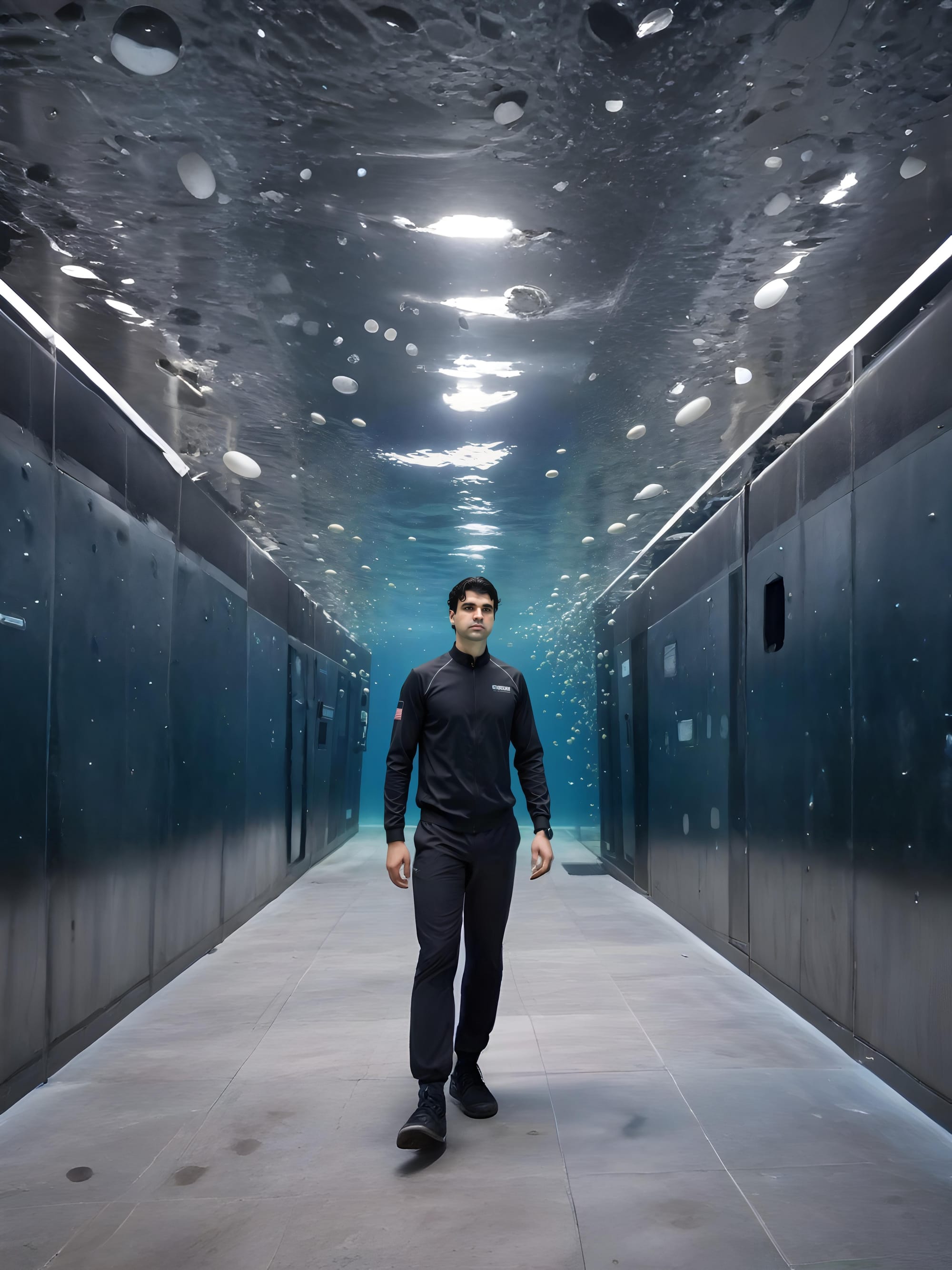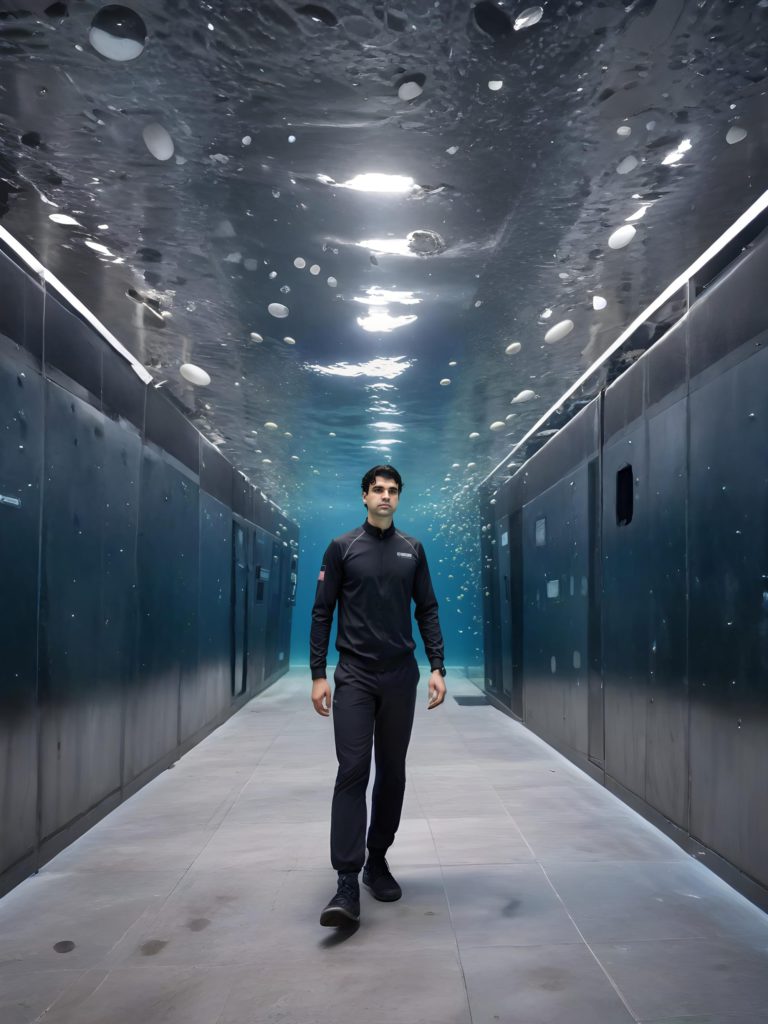
It’s official. China has just taken a step straight out of science fiction and plunged it into the depths of the ocean. They recently launched the world’s first-ever AI-powered underwater data centre. Now, if you’re wondering why on earth (or underwater, for that matter) we’d ever want servers submerged beneath ocean waves – honestly, that’s a pretty valid question. Let’s swim through this together.
Why Put Servers Underwater Anyway?
You know those massive, buzzing server farms stacked high with flashing lights, consuming vast amounts of electricity, and constantly overheating? Well, cooling these data centres isn’t cheap or easy. In fact, it’s a massive headache. So, what’s the next logical step? Drop them into the ocean, obviously.
Deep-sea water naturally offers a cool, stable environment – perfect for keeping servers chill without breaking the bank. Plus, underwater placement significantly reduces land costs and frees up precious real estate. Smart, isn’t it?
But let’s be real – this isn’t just about saving space or money. It’s also a bold play to pioneer greener tech solutions. With climate change breathing down our necks, every innovative step counts.
Introducing the AI Twist
China didn’t just dunk some servers into the ocean and call it a day. No – they went full AI. The entire operation – monitoring, predictive maintenance, temperature regulation is handled by artificial intelligence. This tech marvel learns, adapts, and fine-tunes itself continuously.
Think about it. AI doesn’t sleep. It doesn’t take coffee breaks. It relentlessly analyzes data in real-time, predicting issues long before they become problems. That means fewer outages, lower maintenance costs, and significantly boosted efficiency. Sounds like a win-win, right?
How Exactly Does This Work?
Alright, here’s the thing – the data centre itself is encapsulated in a pressurized, waterproof container, about the size of a shipping container. It’s fully autonomous, too. It sinks down to a predetermined depth, securely anchored to the ocean floor, and voila—instant underwater server farm.
Sensors continuously relay data about pressure, temperature, humidity, and overall structural integrity to AI systems onshore. If anything starts looking fishy (pun very much intended), the AI steps in and handles it proactively. This isn’t just futuristic—it’s genuinely smart engineering.
But Hold Up, Isn’t There a Catch?
Of course, it’s not all sunshine and coral reefs. The ocean is an unforgiving environment. Corrosion, unpredictable currents, marine life—these are genuine challenges. Critics are skeptical about potential ecological impacts too. Could electromagnetic radiation affect marine life? What about leaks?
Honestly, these are legit questions, and they deserve thoughtful answers. So far, China’s pilot project appears promising, but ongoing monitoring and research are absolutely crucial. No technology comes without risk – but isn’t managing risk exactly what innovation is about?
Global Impact and Tech Ripple Effects
Now, what does this underwater escapade mean for the rest of the world? Could this inspire similar projects globally?
Imagine underwater data centres off the coasts of tech-heavy nations like the US, Japan, or Germany. This could revolutionize global tech infrastructure, setting new environmental and operational standards. Even companies like Microsoft previously experimented with underwater data centres (Project Natick), so clearly, this idea holds water—pun fully intended again!
The potential goes beyond just cooling servers. With AI at the helm, underwater data centres could lead to groundbreaking advances in autonomous tech, real-time environmental monitoring, and deep-sea research. The ocean, largely unexplored, could become our next frontier—not just for data but for innovation itself.
A Deeper Dive into AI Ethics
You might be thinking – sure, it’s innovative, but what about the ethics of deploying AI-driven technology in untouched environments like the deep sea?
Fair point. Deploying AI responsibly matters a lot. Experts globally stress the importance of transparency, accountability, and ecological sensitivity. While the Chinese project is pioneering, it also sets the stage for crucial dialogues around ethical tech deployment. And that’s undeniably a good thing.
Wrapping Up – Is This the Future or Just Another Tech Stunt?
Ultimately, whether you’re cheering on innovation or cautiously raising an eyebrow, this underwater AI data centre undeniably signals a significant leap forward. It’s bold. It’s ambitious. And yeah, maybe it’s a little out there – but isn’t that exactly how great advancements happen?
The world’s first AI-powered underwater data centre isn’t just a quirky headline. It might very well redefine how we handle data storage and energy management, pushing the boundaries of what’s technically and environmentally achievable.
Could this mark the dawn of a new era in data technology?
Only time and tide will tell.
FAQs About AI-Powered Underwater Data Centres
1. What exactly is an underwater data centre? It’s essentially a sealed, waterproof container with servers submerged deep in the ocean to naturally cool them, reducing energy consumption.
2. Why does this matter for AI enthusiasts? AI enthusiasts see underwater data centres as a groundbreaking application of artificial intelligence in managing complex environments autonomously, highlighting AI’s potential.
3. Is it safe for the environment? Preliminary tests suggest minimal environmental impact, but thorough long-term studies are still crucial to ensure marine ecosystems remain unaffected.
4. Have other countries attempted similar projects? Yes, Microsoft previously launched Project Natick, experimenting with submerged data centres, though not fully AI-powered like China’s initiative.
5. Could underwater data centres replace traditional ones? They won’t entirely replace land-based data centres anytime soon, but they could significantly supplement them, especially in coastal regions, as tech evolves.
Intrigued?
Yeah, we thought you might be.
Source: Read MoreÂ




